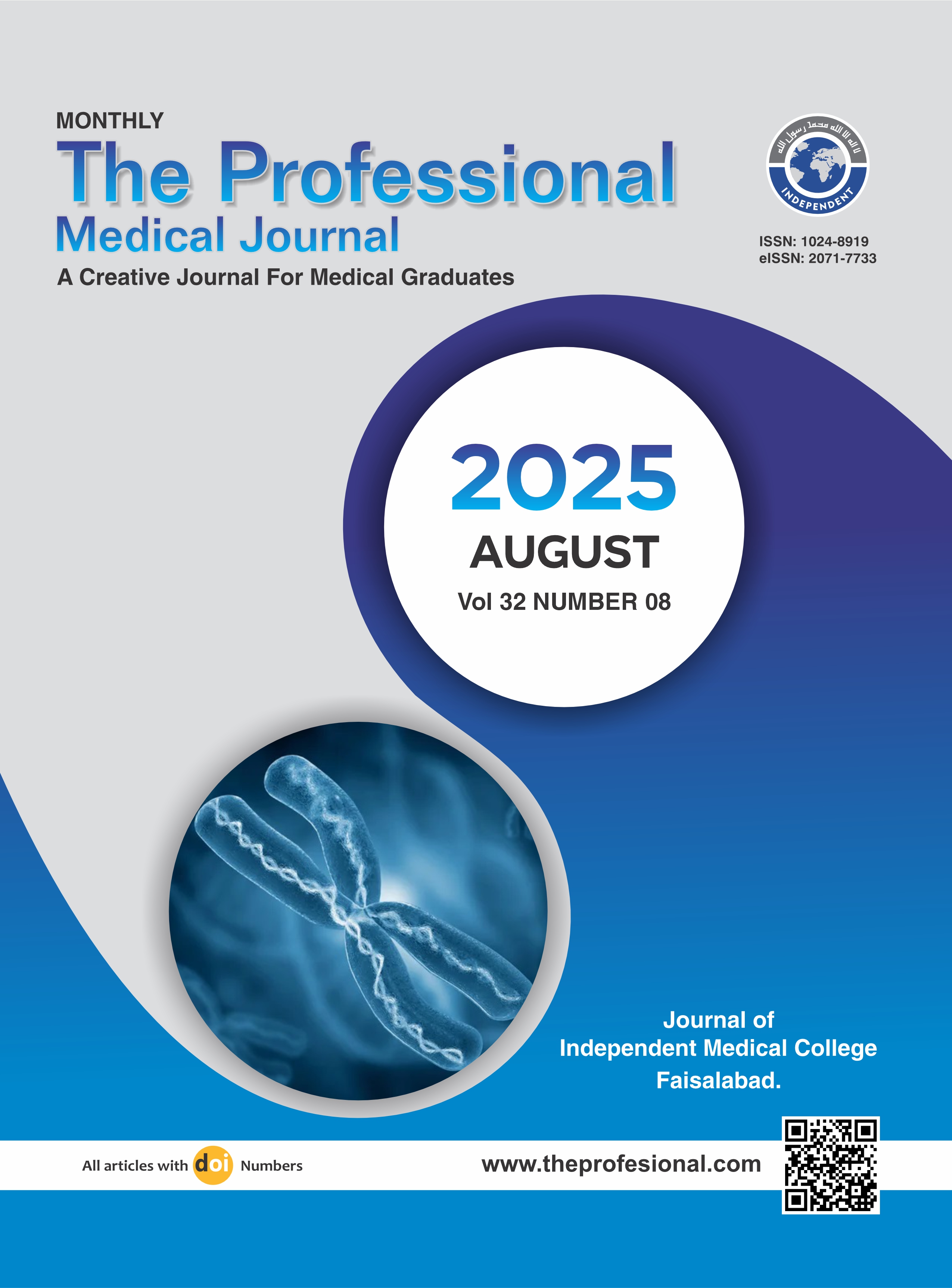Early avastin (Bevacizumab) Administration for acute retinal vein occlusion: A key strategy for improved patient outcomes.
DOI:
https://doi.org/10.29309/TPMJ/2025.32.08.9499Keywords:
BCVA, CMT, Intravitreal Bevacizumab, Macular Edema, RVOAbstract
Objective: To find the mean change in BCVA and CMT after intravitreal injection Avastin administration in patients with acute retinal vein occlusion with macular edema. Study Design: Quasi-experimental study. Setting: LRBT Eye Hospital, Lahore. Period: June 2023 to November 2023. Methods: 60 Patients with acute retinal vein occlusion (RVO) and macular edema, diagnosed within three months of symptom onset. Patients received monthly intravitreal injections of bevacizumab (1.25 mg in 0.05 mL) over three months. Bevacizumab, a widely used anti-VEGF agent, is known to reduce macular swelling and improve vision. The primary outcomes were changes in best-corrected visual acuity (BCVA, logMAR) and central macular thickness (CMT, µm), reflecting vision clarity and macular edema, respectively. Both were monitored using high-resolution optical coherence tomography (OCT), a non-invasive imaging modality. Baseline characteristics were analyzed to assess correlations between demographics, disease duration, and treatment response. Results: The study demonstrated significant improvements: mean baseline BCVA improved from 1.09 ± 0.17 to 0.56 ± 0.19 (p < 0.001), and mean CMT decreased from 455.48 ± 52.05 µm to 300.66 ± 63.96 µm (p < 0.001) after three months. No systemic or ocular adverse events were recorded, supporting bevacizumab’s efficacy and safety for RVO-associated macular edema. Conclusion: We found Intravitreal bevacizumab is a safe and effective method of treatment while dealing with macular edema secondary to RVO in our population, providing significant improvements in VA and MT.
Downloads
Published
Issue
Section
License
Copyright (c) 2025 The Professional Medical Journal

This work is licensed under a Creative Commons Attribution-NonCommercial 4.0 International License.


